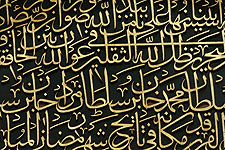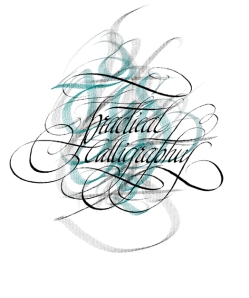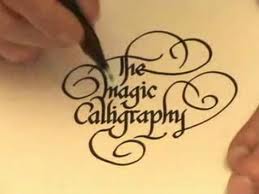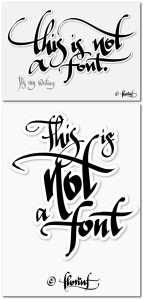History of Calligraphy is as rich and varied as it’s present. Let me show you some of the important aspects of the history that shaped the present day’s form.The word ‘calligraphy’ is derived from the Greek words ‘killi’ and ‘graphos’, meaning ‘beautiful and ‘writing’.
To study the historical context of calligraphy, is to study the origins and developments of calligraphy during its ages. You must know where you’ve come from to know where you are going. So lets start from the beginning .
.
Ancient Chinese Calligraphy has always been considered one of the purest art forms.The Chinese language is monosyllabic which means that each character written represents a word of an object or living form.
writing is said to have been invented by ‘Fu Hsi’. It was developed by two signs called ‘ying’ and ‘yang, which represented positive and negative. The ying drawn was simple one line and the yang was a line with a gap in the middle
History of Japanese Calligraphy is as intriguing as the Japanese Culture itself. It originated in China and goes back to around 28 BC. It came to Japan when Chinese culture was becoming more widespread, which was in the periods of ‘Asoka’ (552-646) and ‘Nara’ (646-794).
 The ‘Kara Yo’ calligraphy style, derived from the Chinese calligraphy’s use of structure, in there following of strict axes and symmetrical rules. ‘Kara Yo’ started from around the Kamakura period, which was from 1192 to 1333. Little is known of the history of Japaneses calligraphy within this style.Kana’ is a Japanese style developed by Chinese calligraphy. The characters in this calligraphy style expresses sound not ideographic Calligraphy is known as ‘shodo’ in Japan which means ‘the way of writing’. The Japanese now have 2 main calligraphy styles called ‘kana’ and ‘kanji’.
The ‘Kara Yo’ calligraphy style, derived from the Chinese calligraphy’s use of structure, in there following of strict axes and symmetrical rules. ‘Kara Yo’ started from around the Kamakura period, which was from 1192 to 1333. Little is known of the history of Japaneses calligraphy within this style.Kana’ is a Japanese style developed by Chinese calligraphy. The characters in this calligraphy style expresses sound not ideographic Calligraphy is known as ‘shodo’ in Japan which means ‘the way of writing’. The Japanese now have 2 main calligraphy styles called ‘kana’ and ‘kanji’.
Islamic calligraphy is the beautiful writing of the Arabic script. It is has been the main Islamic art since the Quran’s revelation (610 AD).
Nabatean script was the recorded earliest form of pre-Arabic script. The early Arabs, called the Nabatean’s, are said to have developed the Aramaic script, also known as the north Arabic script, during around the 5th century.
There are many types of cursive scripts used in Islamic calligraphy one being; The ‘kufic script’ also known as the ‘Kufi script’. This scrip became popular in the 10th century, and although the script was known much earlier, it was not developed good enough until that time.

The Old English Calligraphy history is by far an intriguing story that I am sure you would love to know about.The Roman alphabets is the alphabet used for the English language. In the history of Old English writing Calligraphy, its alphabets organs goes way back to pictography. Pictography is believed to have been the first writing system. Pictography, is drawn simple pictures that represent images of real life object or beings.
Korean calligraphy, is seen as a pure art form in the Korean culture, and other Asian cultures.
It is one of Korea’s most loved art forms. The calligrapher’s brush strokes flows, and dances, across surfaces producing beautiful letter forms. The subject matter of the calligraphy and personality of the calligrapher combines in the letterforms.
How much style does calligraphy , have ? The way all the elements have there own place on the page in the flow of the writing. Apart from the obvious good looks . It is enriched in history . As well as culture . We today are taking it away. Not to a destructive degree. As an element of our own style and grace,
balanced, stylish the two continuous loops on the underside of the letters , I guess it is still a lot of the old style accompanying new attitudes.

Here , this is more of what calligraphy was enitially about to me , traditional loopy , fancy , English , french type style and feel ,The combination of the two maybe a new face in the way we see calligraphy or maybe a way we see another avenue of creative freedom , maybe just with the use of the initial rules of calligraphy can these doors be open .








